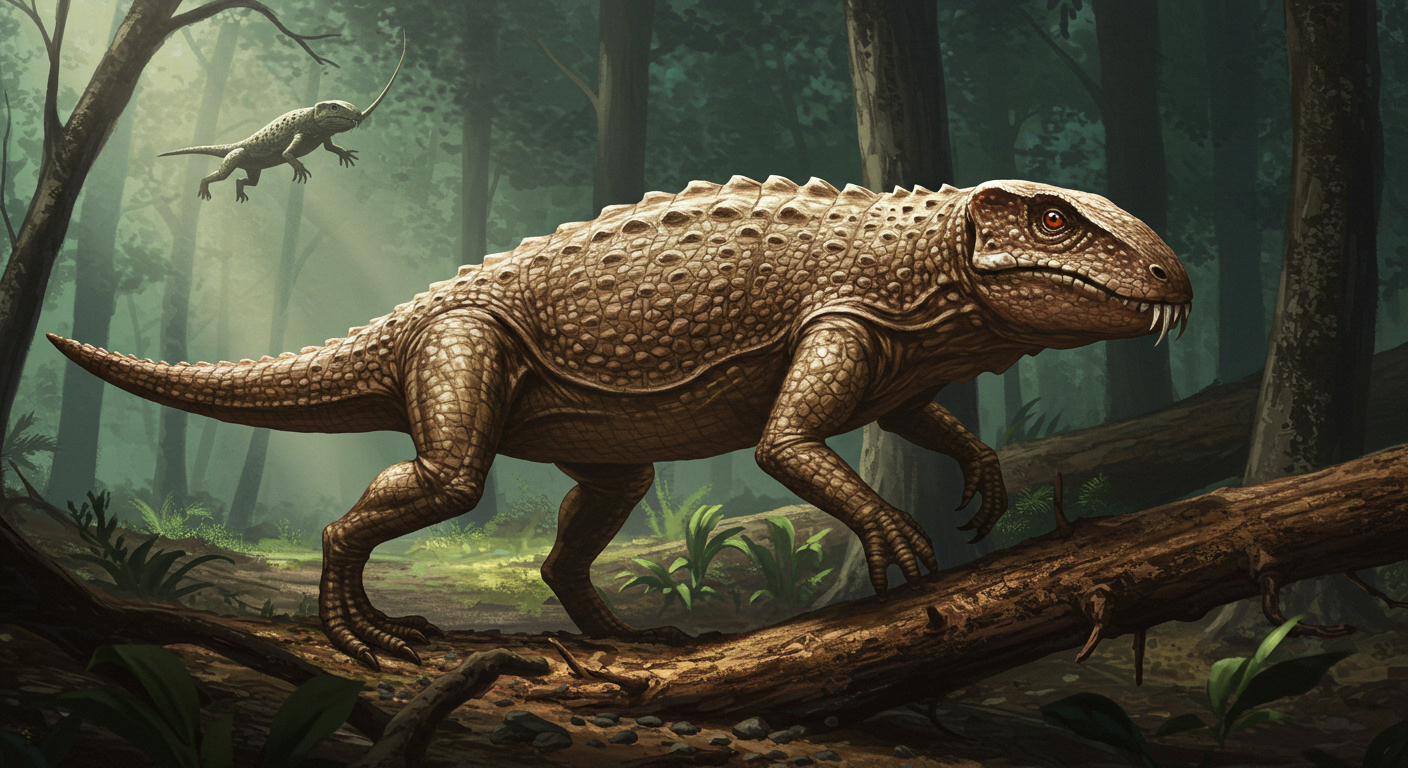The superclass Tetrapoda is a crucial group in the evolutionary history of vertebrates. It includes all animals that possess four limbs or, in some cases, evolved from four-limbed ancestors. This superclass encompasses amphibians, reptiles, birds, and mammals—organisms that have colonized a wide range of terrestrial and aquatic habitats. The origin of tetrapods marked a significant evolutionary transition from life in water to life on land, a milestone that profoundly shaped biodiversity on Earth.
What is the Superclass Tetrapoda?
The term Tetrapoda originates from Greek, meaning “four feet.” As a superclass within the phylum Chordata and subphylum Vertebrata, Tetrapoda includes all vertebrate animals that either currently have or are descended from ancestors with four limbs. Although some modern tetrapods such as snakes and whales have lost limbs or modified them significantly, their evolutionary lineage clearly places them within Tetrapoda.
The superclass Tetrapoda emerged approximately 390 million years ago during the Devonian Period. The transition from aquatic lobe-finned fishes to amphibians was a defining moment, signaling the birth of land-dwelling vertebrates.
Evolutionary Origins of the Superclass Tetrapoda
From Water to Land
The evolution of the superclass Tetrapoda is a story of adaptation and survival. Tetrapods evolved from a group of lobe-finned fishes called sarcopterygians. These fish had fleshy, lobed fins supported by bones, making them structurally capable of bearing weight—an essential pre-adaptation for life on land.
One of the earliest known tetrapods is Tiktaalik roseae, a transitional fossil that exhibits both fish-like and tetrapod-like features. Tiktaalik had a flat skull, robust ribs, and limb-like fins with wrist bones, illustrating the evolutionary bridge between fish and the first true tetrapods.
Key Transitional Adaptations
Several adaptations enabled the early tetrapods to thrive on land:
-
Limb development: Evolved fins turned into limbs with digits for walking and support.
-
Lungs and air breathing: Lungs became the primary respiratory organ, replacing gills.
-
Sensory adjustments: Eyes evolved for better vision in air, and hearing adapted for sound transmission through air.
-
Skin and excretion: Adaptations to reduce water loss and eliminate waste efficiently were critical.
These innovations paved the way for tetrapods to diversify and inhabit various terrestrial and aquatic ecosystems Major Groups within the Superclass Tetrapoda
The superclass Tetrapoda is divided into four major classes:
1. Amphibia (Amphibians)
Amphibians are often regarded as the most primitive tetrapods. They include frogs, toads, salamanders, and caecilians. Amphibians usually have a dual life cycle: an aquatic larval stage followed by a terrestrial adult stage. Their permeable skin requires moist environments, and many still rely on external water sources for reproduction.
Characteristics:
-
Cold-blooded (ectothermic)
-
Moist, glandular skin without scales
-
Three-chambered heart
-
External fertilization (in most species)
2. Reptilia (Reptiles)
Reptiles marked a significant evolutionary leap with the development of the amniotic egg, allowing reproduction away from water bodies. This class includes lizards, snakes, turtles, and crocodilians.
Characteristics:
-
Dry, scaly skin
-
Internal fertilization
-
Lungs for respiration
-
Ectothermic metabolism
-
Shelled, amniotic eggs
3. Aves (Birds)
Birds evolved from small theropod dinosaurs and are characterized by feathers, flight capabilities (in most), and endothermic metabolism. Despite their unique adaptations, birds are firmly rooted within the superclass Tetrapoda.
Characteristics:
-
Feathers and beaks
-
Lightweight skeleton with fused bones
-
High metabolic rate (endothermy)
-
Four-chambered heart
-
Oviparous with hard-shelled eggs
4. Mammalia (Mammals)
Mammals represent the most complex tetrapods, with highly developed brains, social behaviors, and advanced reproductive systems. This class includes humans, whales, bats, and elephants.
Characteristics:
-
Hair or fur
-
Mammary glands for milk production
-
Endothermic metabolism
-
Four-chambered heart
-
Internal fertilization and live birth (in most species)
Unique Features of the Superclass Tetrapoda
The superclass Tetrapoda possesses several defining traits that distinguish it from other vertebrate groups:
Limb Structure
All tetrapods exhibit a basic pattern of limb bones: one upper bone (humerus/femur), two lower bones (radius-ulna/tibia-fibula), wrist/ankle bones, and digits. This pattern is remarkably conserved across diverse species, from frogs to humans.
Skeletal Modifications
The vertebral column, pelvic girdle, and pectoral girdle of tetrapods are adapted to support body weight on land. Neck development, allowing head movement independent of the body, is also a key trait.
Respiration and Circulation
Tetrapods developed lungs and complex circulatory systems suited to oxygen exchange in air. Amphibians have a three-chambered heart, while birds and mammals evolved a four-chambered heart to efficiently separate oxygenated and deoxygenated blood.
Importance of the Superclass Tetrapoda in Evolution
The emergence of the superclass Tetrapoda had profound implications for terrestrial life. It led to:
-
The colonization of new ecological niches
-
Diversification into numerous vertebrate lineages
-
Evolution of sophisticated sensory systems
-
Complex behaviors such as parental care, social structures, and migration
Today, tetrapods are the most ecologically and morphologically diverse vertebrates on Earth.
Conservation and Threats to Modern Tetrapods
Modern tetrapods, especially amphibians and reptiles, face significant threats due to habitat destruction, climate change, pollution, and disease. Over 40% of amphibian species are currently threatened with extinction, signaling a need for urgent conservation efforts.
Protecting tetrapods not only preserves biodiversity but also maintains ecological balance. As apex predators, pollinators, and prey, they play essential roles in ecosystems around the globe.
Conclusion
The superclass Tetrapoda represents one of the most remarkable evolutionary stories in the history of life. From their ancient fish ancestors to modern-day birds and mammals, tetrapods showcase the power of adaptation, resilience, and diversity. Understanding their origins, traits, and ecological roles deepens our appreciation of the natural world and highlights the importance of conserving these incredible creatures for future generations.
